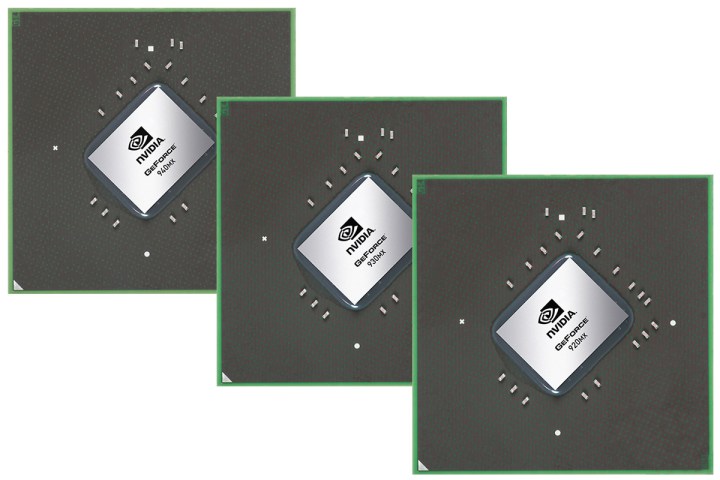
Named the 920MX, 930MX and 940MX, the new chips aren’t part of the unreleased Pascal architecture – that’s coming later this year. These are Maxwell GM108 parts and are designed to replace their predecessors, the 920M, 930M and 940M respectively.
Although these new chips are available for laptop makers to include in their low-end
That doesn’t guarantee that the chips will be paired with the faster memory standard – but the option is there for system builders.
The two more powerful chips, the 940MX and 930MX, both pack 384 CUDA cores and have a 64bit memory bus. The former has a clock speed of 1,176 MHz, while the 930MX sports a clock speed of 967MHz – both however feature bumped clock speeds (by a few tens of MHz) when paired with the weaker memory standard.
In comparison, the 920MX features just 256 CUDA cores and has a 926MHz clock speed for the GDDR5 version, and a 965MHz clock speed for the DDR3 model.
Performance in the models with weaker, lower-powered RAM is expected to be around that of the last generation M parts, though with GDDR5 at their side, these chips are said to offer a decent performance improvement. They will likely appear in budget and mid-range laptops looking to offer a bit more graphical grunt than what Intel Integrated Graphics alone can offer.
Editors' Recommendations
- RTX 4080 Super vs. RTX 4070 Ti Super vs. RTX 4070 Super: Nvidia’s new GPUs, compared
- Don’t wait for new GPUs. It’s safe to buy a gaming laptop now
- Acer’s new gaming laptop bring Nvidia RTX 40-series GPUs under $1,000
- Next-gen AMD and Nvidia GPUs just moved one step closer to launch
- Nvidia’s new liquid-cooled GPUs are heading to data centers





